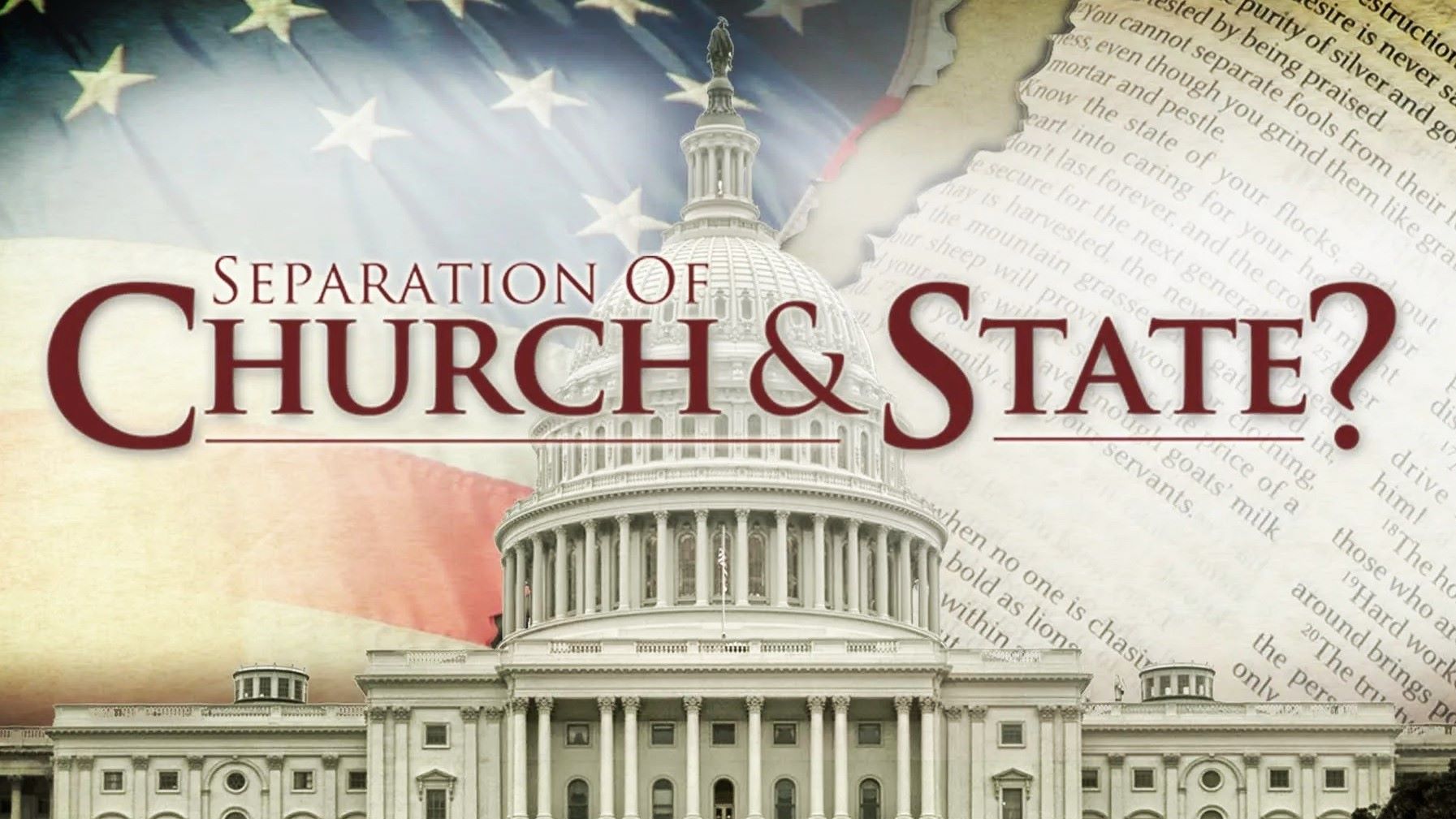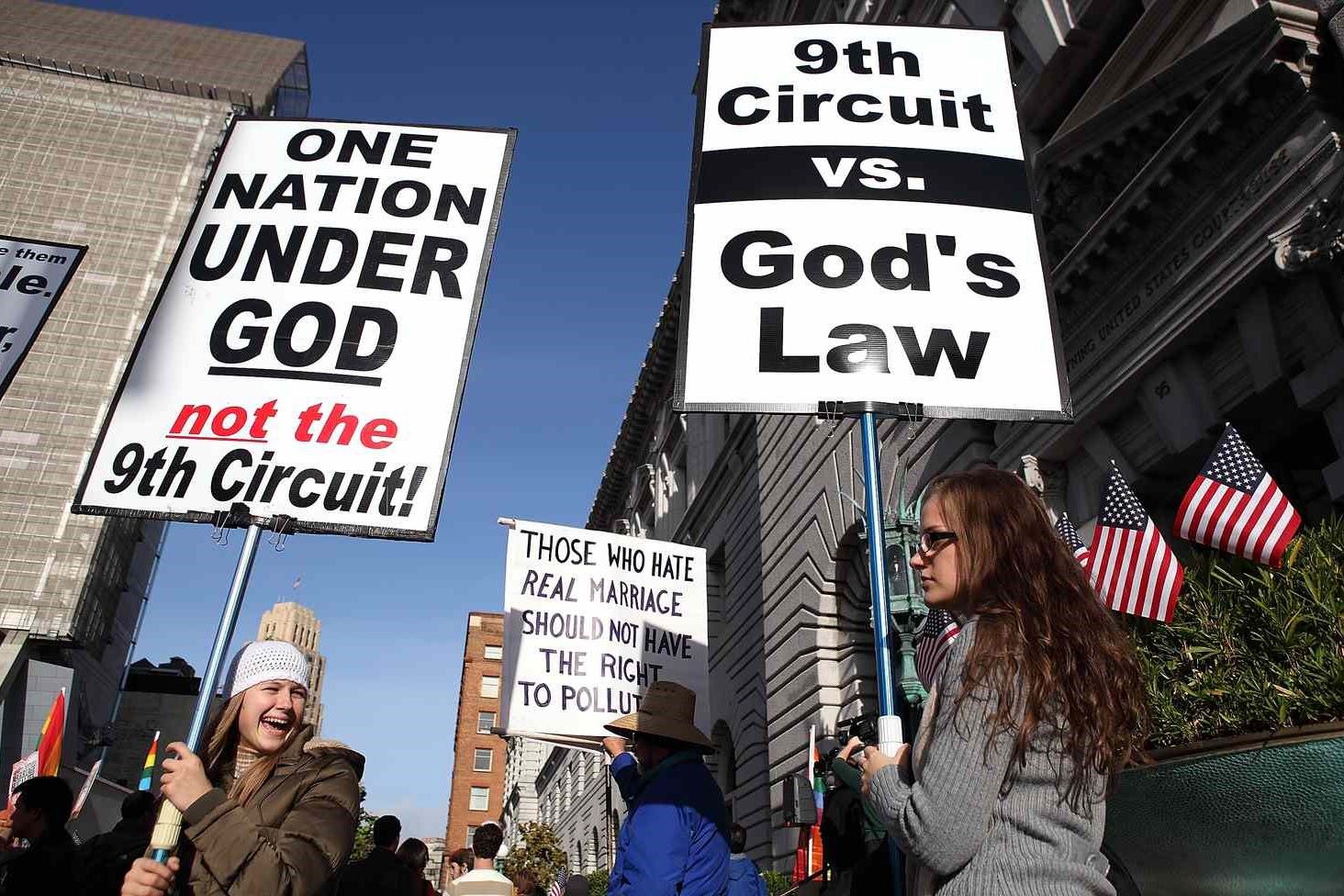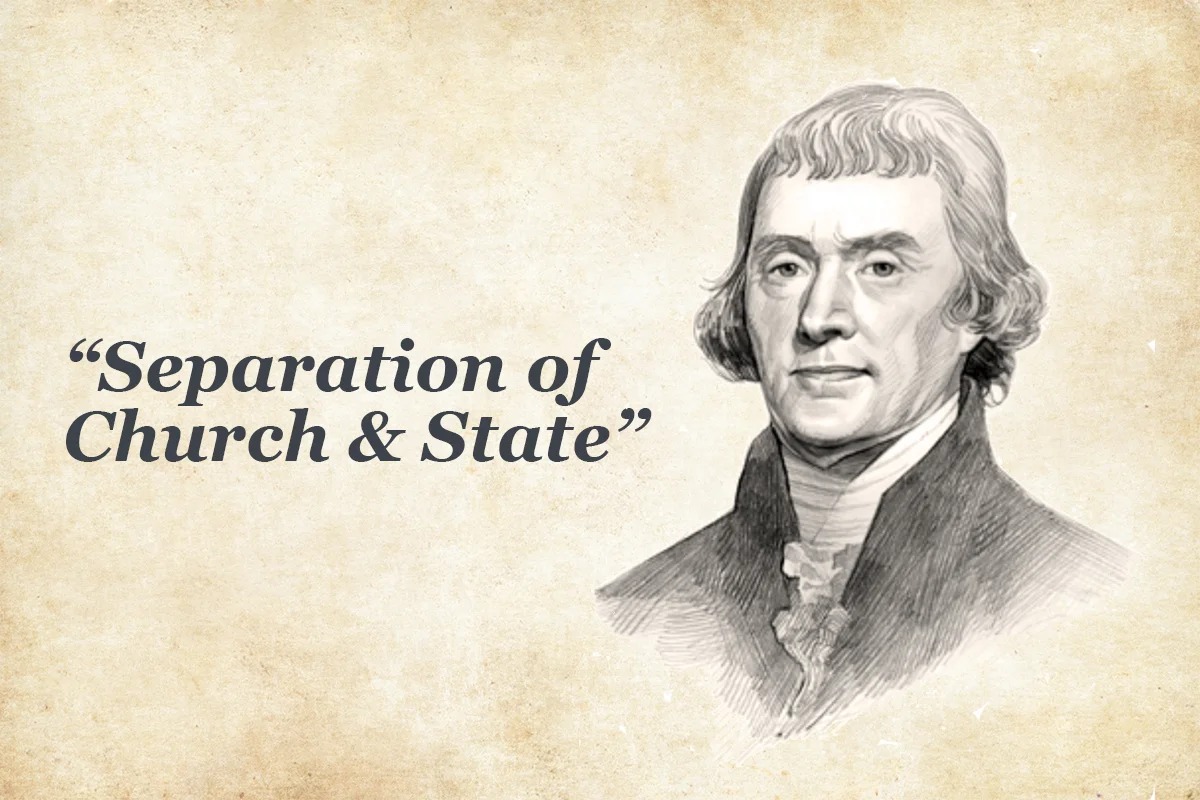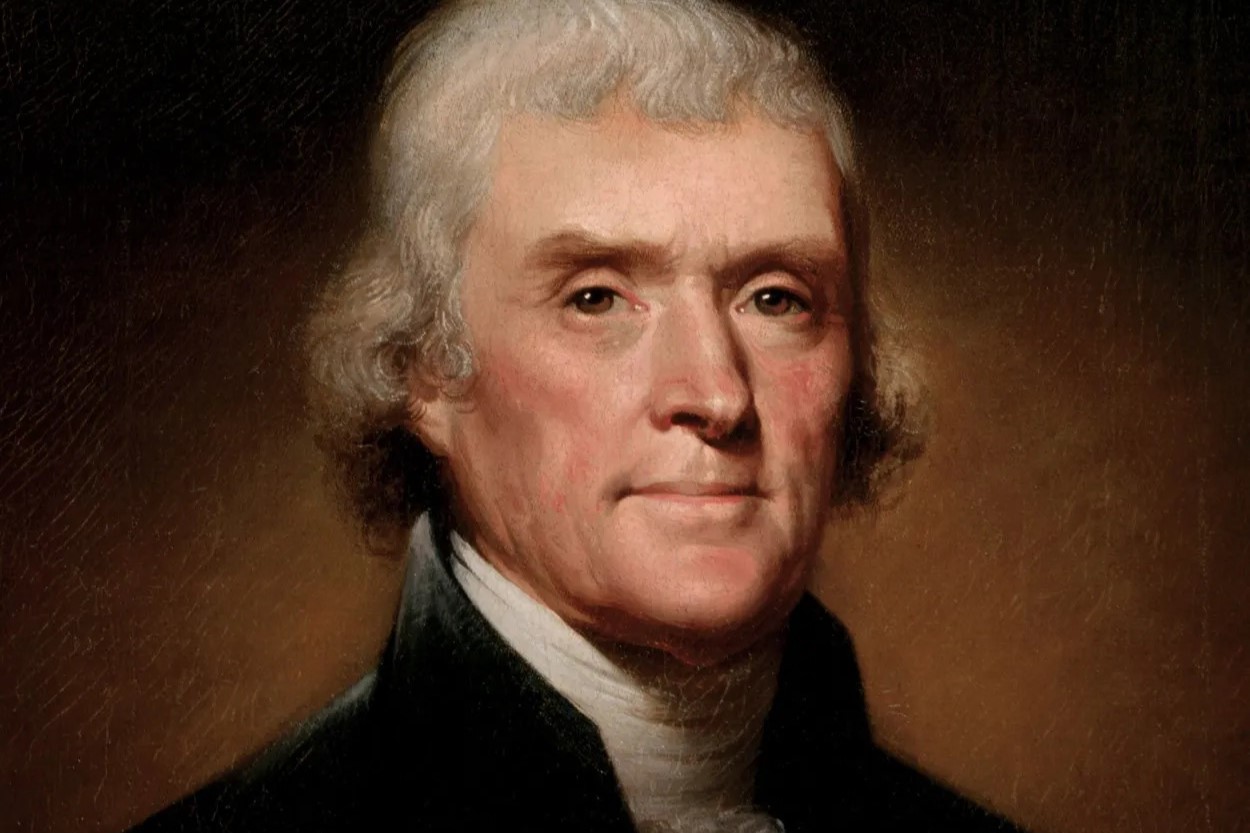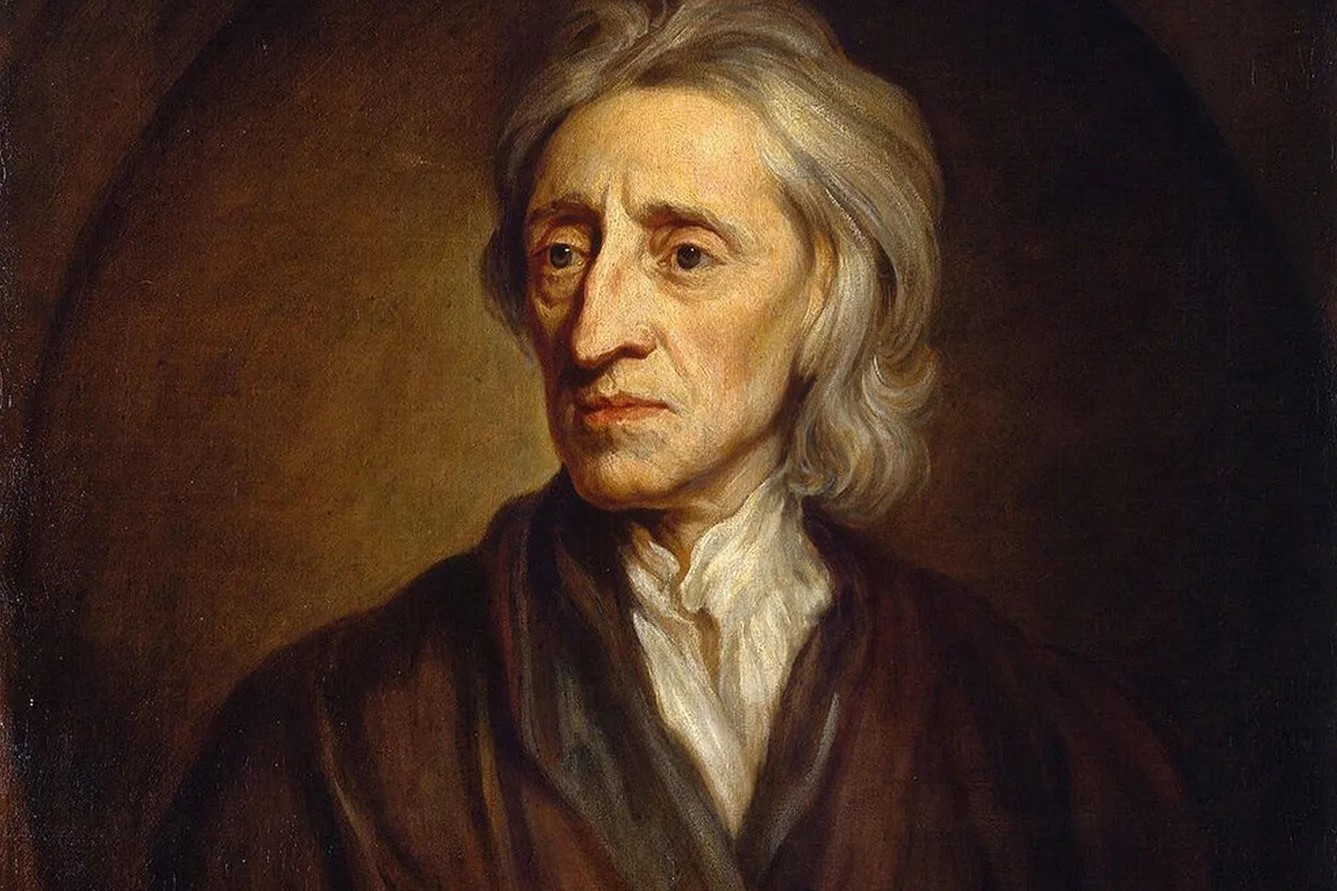Home>Theology and Spirituality>How Did The Warren Court Address The Separation Of Church And State
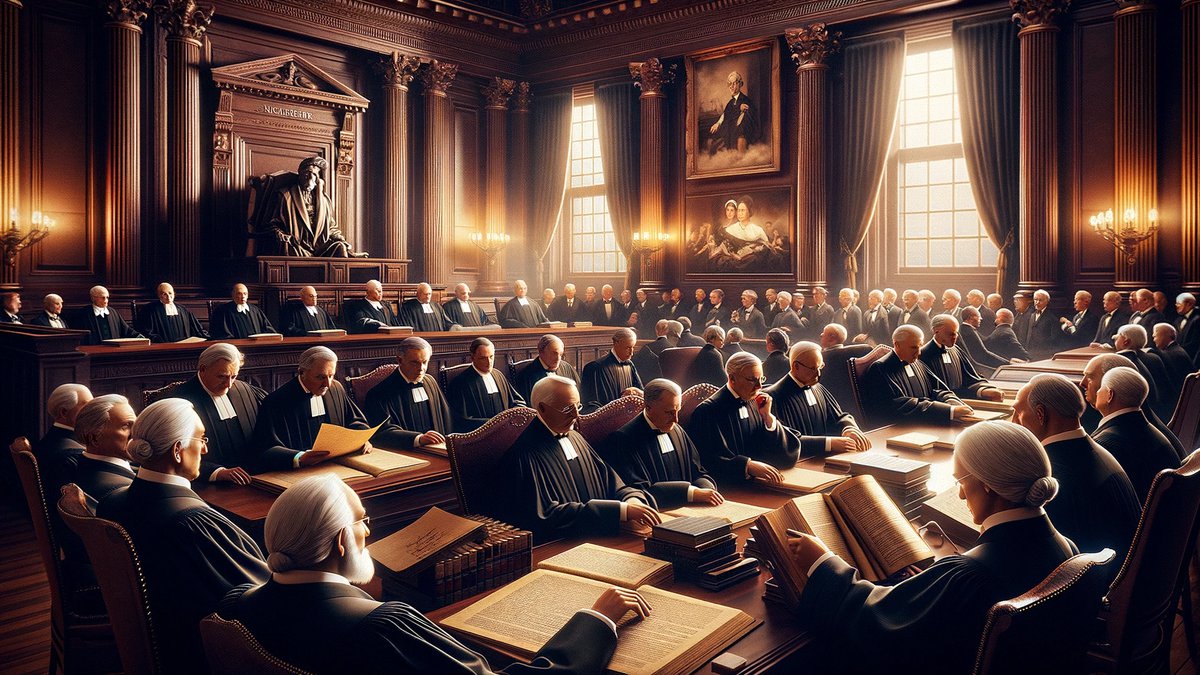

Theology and Spirituality
How Did The Warren Court Address The Separation Of Church And State
Published: February 11, 2024
Peter Smith, Editorial Director at Christian.net, combines deep insights into faith, politics, and culture to lead content creation that resonates widely. Awarded for his contributions to religious discourse, he previously headed a major organization for religious communicators, enhancing dialogue on faith's societal impacts.
Discover how the Warren Court tackled the separation of church and state in this insightful exploration of theology and spirituality. Explore the impact of their decisions today.
(Many of the links in this article redirect to a specific reviewed product. Your purchase of these products through affiliate links helps to generate commission for Christian.net, at no extra cost. Learn more)
Table of Contents
Introduction
The Warren Court, which spanned from 1953 to 1969, played a pivotal role in shaping the interpretation of the First Amendment's Establishment Clause, which states that "Congress shall make no law respecting an establishment of religion." This clause has been central to the ongoing debate surrounding the separation of church and state in the United States. Under the leadership of Chief Justice Earl Warren, the Supreme Court addressed several landmark cases that significantly influenced the relationship between religion and government.
During this era, the Court grappled with complex questions regarding the extent to which religious practices and institutions could intersect with public life without violating the constitutional principle of separation of church and state. The decisions rendered by the Warren Court set important precedents that continue to impact legal and societal discussions on this issue.
The Warren Court's approach to the separation of church and state reflected a commitment to upholding the fundamental principles of religious freedom and preventing the establishment of a state-sponsored religion. Through a series of influential rulings, the Court sought to strike a delicate balance between respecting individuals' rights to religious expression and safeguarding the secular nature of government institutions.
As we delve into the key decisions and legal doctrines that emerged during the Warren Court era, it becomes evident that the Court's interpretations of the Establishment Clause significantly shaped the landscape of religious liberties in the United States. By examining the Court's stance on school prayer, funding for religious schools, and other pivotal issues, we gain valuable insights into the evolving dynamics of the separation of church and state within the framework of constitutional law.
The legacy of the Warren Court's jurisprudence on the separation of church and state continues to reverberate in contemporary legal debates and societal discourse. By exploring the Court's landmark rulings and the principles that underpinned its approach, we can gain a deeper understanding of the enduring impact of this transformative era in American constitutional history.
The Establishment Clause and the Lemon Test
The Establishment Clause of the First Amendment serves as a cornerstone of the constitutional framework governing the relationship between religion and government in the United States. During the Warren Court era, the Supreme Court grappled with the complexities of interpreting and applying this crucial provision, ultimately establishing a pivotal legal standard known as the Lemon Test.
The Lemon Test, derived from the landmark case Lemon v. Kurtzman (1971), laid out a three-pronged assessment to determine the constitutionality of laws or government actions concerning religion. The test stipulates that a statute must have a secular legislative purpose, its primary effect must neither advance nor inhibit religion, and it must not result in excessive entanglement between government and religion. This multifaceted framework provided a structured approach for evaluating the constitutionality of laws and policies related to religion, offering clarity and guidance to the judiciary in navigating complex cases involving the Establishment Clause.
The Lemon Test, with its emphasis on secular purpose and non-entanglement, underscored the Court's commitment to preventing government endorsement or promotion of religious activities. By requiring laws to serve a secular purpose and avoid excessive entanglement with religious institutions, the test aimed to safeguard the principle of government neutrality in matters of faith, thereby upholding the spirit of the Establishment Clause.
Through the Lemon Test, the Warren Court established a robust legal standard that continues to shape the adjudication of Establishment Clause cases. This enduring framework has provided a consistent method for evaluating the constitutionality of diverse government actions, from public displays of religious symbols to financial support for religious organizations. The Lemon Test's influence extends beyond its original context, permeating the broader discourse on the separation of church and state and guiding judicial deliberations on religious freedom and governmental neutrality.
The legacy of the Lemon Test reflects the Warren Court's commitment to delineating clear boundaries between religion and government, ensuring that the Establishment Clause serves as a bulwark against the establishment of a state religion or the privileging of one faith over others. By articulating a structured approach to assessing the constitutionality of laws and policies implicating religion, the Court's formulation of the Lemon Test stands as a testament to its enduring impact on the constitutional jurisprudence surrounding the separation of church and state.
The Establishment Clause and the Lemon Test, therefore, stand as enduring pillars of constitutional interpretation, embodying the Warren Court's dedication to upholding the principles of religious freedom and governmental neutrality in matters of faith.
School Prayer and Bible Reading
During the Warren Court era, the issue of school prayer and Bible reading emerged as a focal point in the ongoing debate over the separation of church and state. The Court confronted the question of whether organized prayer and religious activities in public schools infringed upon the Establishment Clause of the First Amendment. This contentious issue prompted the Court to grapple with the delicate balance between protecting religious liberties and preventing government-sponsored religious practices within the public education system.
In the landmark case of Engel v. Vitale (1962), the Warren Court delivered a seminal decision that reverberated throughout the realm of education and religious freedom. The case centered on a New York State law requiring a daily recitation of a state-composed prayer in public schools. The Court, in a momentous ruling, declared the practice unconstitutional, emphasizing that it violated the Establishment Clause by fostering government involvement in religious activities. This pivotal decision underscored the Court's commitment to safeguarding the secular nature of public education and preventing the imposition of religious observances by state authorities.
Similarly, the Warren Court addressed the issue of Bible reading in public schools in the case of Abington School District v. Schempp (1963). The Court confronted a Pennsylvania law mandating the reading of Bible passages at the beginning of each school day. In a landmark decision, the Court held that such practices contravened the Establishment Clause, emphasizing that public schools should refrain from promoting or endorsing specific religious beliefs. The ruling underscored the Court's dedication to preserving the religious neutrality of public education and ensuring that students from diverse faith backgrounds were not subjected to religious indoctrination in a government-controlled setting.
These pivotal decisions regarding school prayer and Bible reading exemplify the Warren Court's commitment to upholding the principle of government neutrality in matters of religion. By striking down state-mandated religious activities in public schools, the Court affirmed the importance of protecting individual religious freedom while preventing the entanglement of government institutions with religious practices. The legacy of these decisions continues to resonate in the realm of education, shaping the parameters of religious expression within public school settings and reaffirming the constitutional imperative of maintaining a secular environment in government-funded educational institutions.
The Warren Court's jurisprudence on school prayer and Bible reading reflects its enduring impact on the interpretation of the Establishment Clause, setting crucial precedents that continue to influence the intersection of religion and public education in the United States. These landmark decisions underscore the Court's pivotal role in delineating the boundaries between religious expression and government authority, thereby shaping the landscape of religious liberties within the sphere of public schooling.
Funding for Religious Schools
During the Warren Court era, the issue of funding for religious schools emerged as a contentious and legally complex matter, prompting the Supreme Court to grapple with the intersection of government support and religious institutions. The Court's deliberations on this issue reflected its commitment to navigating the delicate balance between respecting religious autonomy and upholding the constitutional principle of separation of church and state.
One of the pivotal cases that exemplified the Court's engagement with the funding of religious schools was Everson v. Board of Education (1947). In this landmark decision, the Court addressed the constitutionality of a New Jersey law that authorized the use of public funds to reimburse parents for the costs of transporting their children to both public and private schools, including parochial institutions. The Court, in a nuanced ruling, upheld the law, emphasizing that the transportation reimbursement program served a secular purpose by ensuring the safety and welfare of students, irrespective of the schools they attended. This decision marked a significant milestone in the Court's jurisprudence on government support for religious schools, establishing a precedent for the permissible allocation of public funds in a manner that did not unduly advance or inhibit religion.
Subsequently, the issue of government aid to religious schools resurfaced in the case of Lemon v. Kurtzman (1971), which introduced the influential Lemon Test. This case centered on laws in Pennsylvania and Rhode Island that provided financial assistance to non-public elementary and secondary schools, including parochial institutions, for various secular educational purposes. The Court, applying the newly formulated Lemon Test, scrutinized the laws and ultimately struck them down, citing excessive entanglement between government and religion. The decision in Lemon v. Kurtzman underscored the Court's vigilance in preventing the government from impermissibly advancing or entangling itself in religious activities through the allocation of public funds.
The Warren Court's approach to funding for religious schools reflected its commitment to ensuring that government support for educational initiatives maintained a secular purpose and avoided fostering excessive entanglement with religious institutions. The Court's decisions in Everson and Lemon v. Kurtzman established guiding principles for evaluating the constitutionality of government aid to religious schools, emphasizing the imperative of secular intent and minimal entanglement as essential criteria for permissible allocation of public funds.
The legacy of the Warren Court's jurisprudence on funding for religious schools continues to resonate in contemporary debates over educational policies and the boundaries of government support for religious institutions. By delineating clear parameters for the allocation of public funds in the context of religious education, the Court's decisions during this era have left an indelible mark on the legal landscape, shaping the contours of government involvement in supporting religious educational endeavors while upholding the constitutional mandate of preserving the separation of church and state.
Conclusion
The legacy of the Warren Court's jurisprudence on the separation of church and state stands as a testament to its enduring impact on the constitutional landscape of the United States. Through landmark decisions and the formulation of influential legal doctrines, the Court, under the leadership of Chief Justice Earl Warren, navigated complex and contentious issues surrounding the intersection of religion and government, leaving an indelible imprint on the interpretation of the Establishment Clause and the broader discourse on religious freedom.
The establishment of the Lemon Test, with its emphasis on secular purpose, non-entanglement, and the absence of primary effect in advancing or inhibiting religion, provided a structured framework for evaluating the constitutionality of laws and policies implicating religion. This enduring standard continues to guide judicial deliberations and shape the parameters of government involvement in religious activities, underscoring the Court's commitment to preventing the establishment of a state religion and upholding the principle of government neutrality in matters of faith.
The Warren Court's pivotal decisions on school prayer and Bible reading in public schools reaffirmed the importance of maintaining a secular environment in government-funded educational institutions. By striking down state-mandated religious activities, the Court upheld the constitutional imperative of preventing government endorsement or promotion of specific religious beliefs, thereby safeguarding the religious neutrality of public education and protecting the rights of students from diverse faith backgrounds.
Furthermore, the Court's nuanced approach to funding for religious schools, as exemplified in cases such as Everson v. Board of Education and Lemon v. Kurtzman, established crucial precedents for evaluating the permissibility of government aid to religious institutions. The emphasis on secular purpose and the avoidance of excessive entanglement with religious entities underscored the Court's commitment to ensuring that government support for educational initiatives maintained a secular intent, thereby upholding the constitutional mandate of preserving the separation of church and state.
The enduring impact of the Warren Court's jurisprudence on the separation of church and state continues to reverberate in contemporary legal debates and societal discourse, shaping the evolving dynamics of religious liberties and governmental neutrality. By delineating clear boundaries between religion and government, the Court's decisions during this transformative era have left an enduring legacy, underscoring the enduring significance of the Warren Court's contributions to the constitutional principles governing the relationship between religion and the state in the United States.

